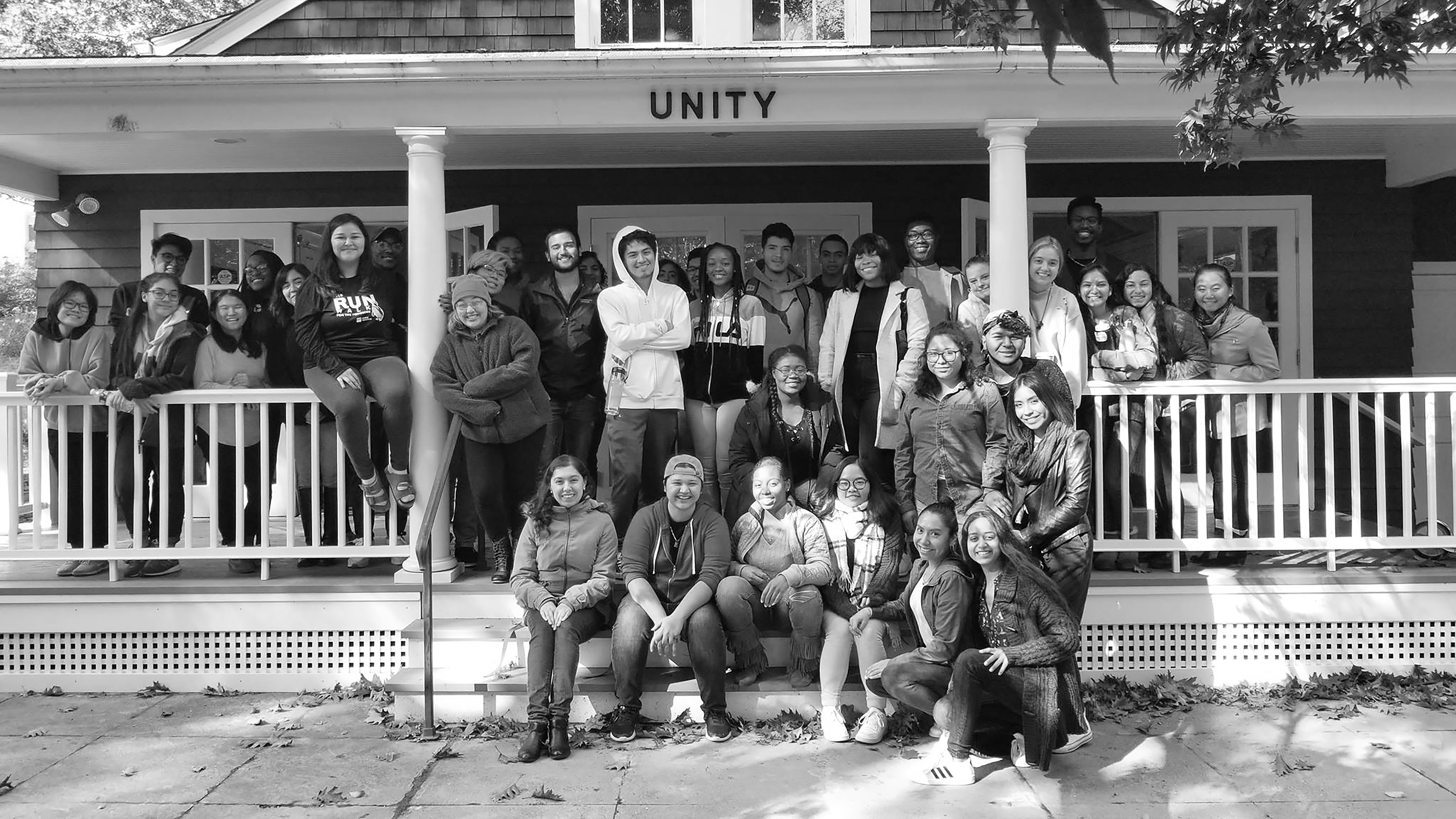Photo courtesy of Connecticut College Unity House.
Members of minority groups experience many interactions that merit educating their peers on their oppressive realities. This experience is no less true on Conn’s campus, where a multiplicity of identities converge and thrive in a close-knit community. At times, curiosity can be indistinguishable from ignorance. Whatever understanding these interactions produce are confined to the limitations of discussion and conversation and may not equally extend throughout every students curriculum.
However, the Equity and Inclusion Action Plan, headed by Dean John McKnight, goes beyond the random and unreliable instances for re-education and implements engaging policy embedded in the institutional structure. It also works to ameliorate the student experience through curriculum, financial aid, and social experience. When Dean McKnight began at Conn in 2016, he recalled, “There was already a lot of good work being done at this institution—it just needed somebody to coordinate it, pull it together, and then establish a system of accountability.” McKnight reflected on work produced during the 80s, 90s, and early 2000s, recognizing barriers in the work already being done and hoping to increase diversity through the culmination of these past documents.
The Action Plan is a more guided structure to increase student experiences with diversity and inclusion by providing students with new curricular requirements. Students are now seeing its implementation. At the end of last semester, faculty voted to establish new requirements focused on social difference and power. Beginning next fall, new incoming students will have the opportunity to take two required courses which have the “potential to shift culture” on campus. McKnight stressed the importance of dialogue, noting his First-Year Seminar, “Conversations on Race”, which he is teaching this semester alongside Psychology Professor Audrey Zakriski. The course was influenced by Inter Dialogue Pedagogy (IGD) defined as “a facilitated learning experience that brings students from different social groups over a sustained period of time to understand their commonalities.” Announced at the end of last week, Agnus Gund ‘60 gifted $1 million to the Dialogue Project. The Project, which “combines critical theory and experiential learning,” has several phases which include formal training for faculty and staff and a first-year seminar.
There is even more to look forward to in the upcoming years. The plan will also refurbish the Womxn’s Center and LGBTQIA Center, which McKnight thinks of as physically isolated resources on campus. He says, the renovation “has been a long time coming. The challenge is finding where these spaces can go.” A tentative renovation plan includes moving the Womxn’s Center, which currently occupies the basement of Smith-Burdick, into the first floor of Smith, where the game room currently resides. The LGBTQIA Center would also share the space, becoming what McKnight described as a “21st century cultural center.”
The term “cultural center” has significant history. First established in the 1960s during the civil rights movement, cultural centers focused on race and were created as spaces to provide safety and security to students. Building a “cultural commons” would provide students with the opportunity to learn about intersectionality, creating vital conversations on the topic of power and equality on Conn’s campus. McKnight also highlighted the education that he hopes students will receive in this shared support space and acknowledged the lack of student knowledge about the affinity spaces on campus, saying, “Students should understand the history and purpose of these centers. It’s not always abundantly clear… it’s easy to make up a narrative.” He’d like to give students the chance to occupy these spaces with a strong understanding of their purpose. According to the Implementation Plan renovations will be completed between Fall 2021 and Summer 2025. Accordingly, discussions about the new space have already begun. Working alongside the Facilities Department, the Action Plan will choose an architect during the Fall semester and will begin programming study conversations during the Spring semester.
The Action Plan has not been isolated in the Diversity of Equity and Inclusion Offices. It also extends to the Office of Institutional Research. McKnight acknowledged that the plan allows faculty to “not assume what issues exist, but also study it.” The Office of Institutional Research provides answers to specific questions the administration has about diversity and inclusion on Conn’s campus in order to provide focused efforts to increase diversity. To aid in research gathering, surveys will be sent out to all students and faculty to help inform further decision-making. The first survey will assess the institutions strengths and weaknesses, while identifying student perceptions. The second will focus on sexual misconduct on campus.
McKnight says that, “Shifting attitudes is not always something you can guarantee. You can’t necessarily pinpoint which experiences might actually result in an attitudinal change,” but the Action Plan does seek to make behavioral changes and expose students to information and cultures that they may be isolated from. These new projects represent the bright future and impact it will have on incoming Conn students. •









